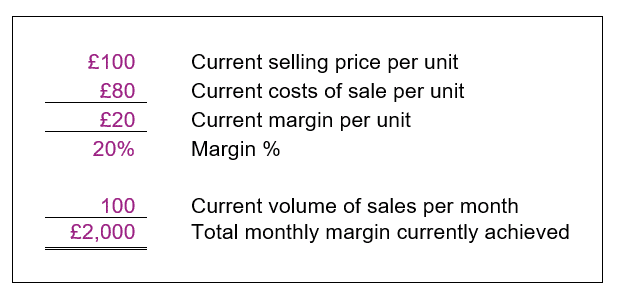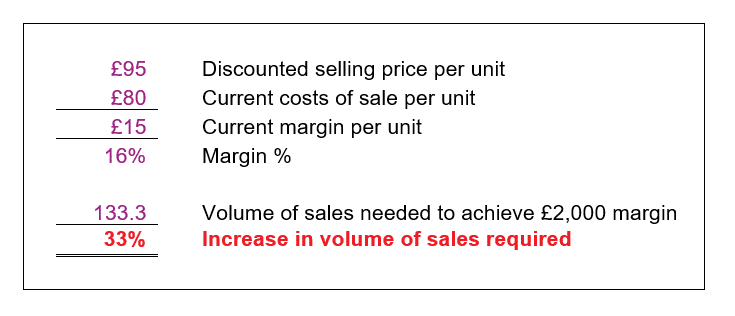- About us
- Our Courses
section
- Finance For Non-Financial Managers
- Commercial Acumen & Awareness
- Finance Business Partnering
- Creating and Managing Budgets
- Understanding and Analysing Accounts
- Business Case Creation & Evaluation
- Project Finance & Investment Appraisal
- Balance Sheet Analysis
- Bespoke Learning
- News
- Resources
- Case Studies
- Contact us
We still have a few dates available for bookings before the end of June 2024
Contact us nowBy beating competitors’ prices, more sales will be secured and more money will be made – right?
Not necessarily.
Many businesses are more concerned by the loss of a sale to a competitor than by ensuring that every sale is profitable. Rather than concentrating on delivering a product or service that offers value, some businesses tend to focus on pricing. However, the lowest possible price isn’t always the best solution.
What’s Profitable Vs What’s Valuable
Discounting prices is a common strategy employed with the intention to increase sales and improve the bottom line. While it may seem to make sound financial sense, the impact it has may not always be quite so straightforward. A seemingly insignificant discount can often have a dramatic effect on your overall profits.
It’s important to consider how price wars and discounts can impact your margins. The relationship between selling price, margins and volume helps to anticipate the impact of a discounting strategy.
To work this out, you firstly need to understand the margin that you are currently making on the product or service that you are considering discounting. The margin is calculated by subtracting the unit costs of sale, i.e. the extra costs incurred each time you sell one more unit of this product/service, from the unit selling price. This will give you the value of the margin that you currently make per unit.
Next, you need to work out the percentage margin that you are making. For example, if you sell a product at £100 per unit and the costs of sale for this is £80, you currently make £20 margin. The margin percentage is simply the margin as a percentage of the selling price – 20% in this example.
The final step before assessing the impact of the proposed discount is to identify how much volume of this product/service you are currently selling. This volume can then be multiplied by the margin made per unit to calculate the total amount of margin you are making on this product/service.
Let’s take a look at the table below to see how this works:

Now we need to work out the impact of the proposed discounting strategy. Let’s assume that you are considering dropping your price by just 5% – not much at all. As your costs of sale won’t change, this immediately reduces your margin to £15 per unit using the same example as above. In order to achieve the £2,000 of monthly margin that you were previously achieving without the discount, a whopping 33% more sales are needed. This is shown in the table below.

In this instance, you would be providing more value to your customers by offering them the same product at a lower price. However, unless you can guarantee a 33% increase in sales volume, it’s more profitable for your business not to discount your unit price.
This isn’t to suggest that businesses should never offer price discounts. Rather, it’s crucial for a business to understand the impact that doing so could have on the gross margin. If the business decides to go ahead with offering the discount, it must have some clear and valid reasons why this is still a good idea.
These examples are taken from our Finance for Non-Financial Managers course.
Our Finance for Non-Financial Managers course
Find out more or talk to an experts today
© 2024 Complete Financial Training. All Rights Reserved.